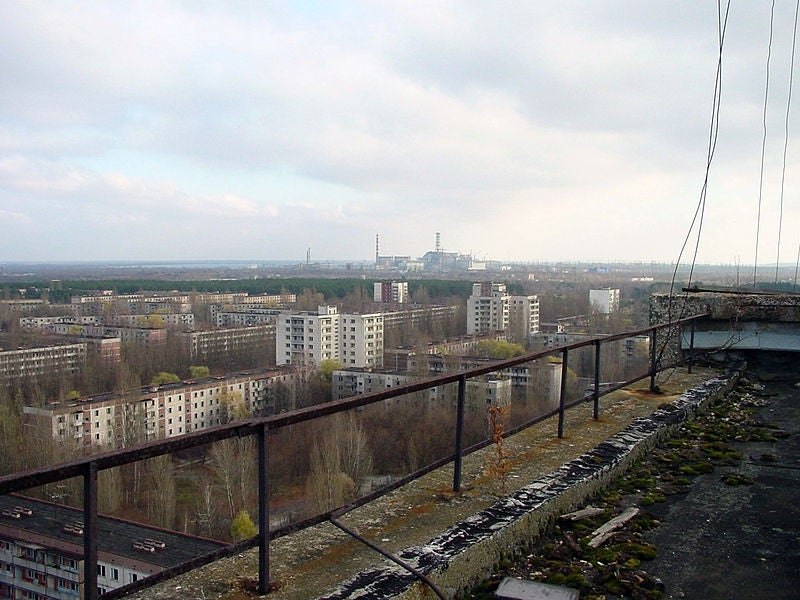
Chernobyl HBO: The Catastrophic Nuclear Disaster
The HBO miniseries Chernobyl has been released to critical acclaim, with Sky Atlantic tweeting on 23 May: “Chernobyl is officially the highest rated TV show of all time on IMDb. Thanks to everyone for watching and rating.”
https://twitter.com/skyatlantic/status/1131555102676983811

Discover B2B Marketing That Performs
Combine business intelligence and editorial excellence to reach engaged professionals across 36 leading media platforms.
As The Sun helpfully pointed out, Chernobyl is based on a ‘terrifying true story’ of arguably the worst nuclear power disaster ever and how the Soviet Union dealt with the catastrophe, and keep it secret from the world and its citizens. But how close were the makers of the show to the truth of Chernobyl? Or was fact separated from fiction?
What happened in Chernobyl?
The Chernobyl nuclear disaster took place on 26 April 1986 at 1.23am.
The plant was in the midst of a shutdown when there was a power surge, caused by control rods being inserted into the reactor. The mix of the overly hot fuel with the cooling water caused increased pressure and steam production, which spread through the entire core and caused an explosion. This was followed by a second explosion possibly caused by a build-up of hydrogen from zirconium steam explosions.
A radioactive plume of smoke and debris rose about a kilometre in the air and eventually spread across Europe. It was estimated this radiation was equivalent to 500 atomic bombs of the same level that were dropped on Hiroshima.

US Tariffs are shifting - will you react or anticipate?
Don’t let policy changes catch you off guard. Stay proactive with real-time data and expert analysis.
By GlobalDataAfter a major operation involving firemen, evacuations of the town of Pripyat and the dumping of 5,000 tonnes of materials like boron carbide, lead, sand and clay, the reactor was eventually entombed in a steel and concrete sarcophagus to lock in the radiation.
According to Soviet officials, 31 people were killed directly from the disaster, but the death toll is greatly debated. Among workers and local residents, the estimates vary between 4,000 according to the WHO and 60,000 according to a report by two radiation scientists.
What the show got wrong
Some changes and errors were made in the development of ‘Chernobyl’, as New York Times science writer Henry Fountain wrote.
He mentioned that the blue light from the exposed reactor in episode one was based on something called Cherenkov radiation but “there’s no way Unit Four would have looked like the “Tribute in Light” in Lower Manhattan on the anniversary of Sept. 11.” Fountain also pointed to firefighters climbing over reactor debris in the series when they worked on the roof to prevent fires. The character of Ulana Khomyuk (played by Emily Watson) was also the composite of three different scientists.
Despite this, Fountain concluded that “In the end, though, none of this really matters. For the mini-series gets a basic truth right, that the Chernobyl disaster was more about lies, deceit and a rotting political system than it was about bad engineering or abysmal management and training.”
The Union of Concerned Scientists acting director Edwin Lyman told Power Technology that one oversimplification the show made was that it took for granted that the first power excursion was precipitated by the operator trying to shut down the reactor by inserting control rods, which had a “positive scram effect” due to the reactor’s design flaws.
Lyman suggested that it was possible that the reactor was already unstable so the insertion of control rods had little effect. He did believe that the show was “generally fairly accurate” and said that “It’s quite remarkable that after all these years, there are still significant unknowns regarding the cause and evolution of this very complex accident.”
He also added that the claims made about the potential of a steam explosion from contact between the molten fuel and the water pool under the reactor were ‘inflated’. In episode two, Gorbachev is told by Valery Legasov (played by Jared Harris) and Khomyuk that this would devastate Ukraine and Belarus for hundreds of years. Lyman said “The impacts would have been worse to be sure, but not that much worse.”
Wider implications of the show
A spokesperson for the World Nuclear Association said that due to the success of the show the organisation has seen a large increase in traffic on its website on its Chernobyl information paper.
When asked if it would lead to more anti-nuclear feeling they told Power Technology: “The Chernobyl accident was serious and has resulted in long term psychological and socio-economic impacts for the people affected. However serious, nuclear accidents are very rare and even accounting for these nuclear energy has caused fewer deaths than any other form of electricity generation.
“According to the UN Scientific Committee on the Effects of Atomic Radiation less than 100 people are believed to have died from radiation as a result of the Chernobyl accident to date. This is a tiny fraction of the deaths which are caused by other major energy sources every single year.”
Lyman concluded: “The show has proven to be immensely popular, has attracted much attention, and has stimulated renewed discussion of nuclear power safety around the world. This is all to the good. But as was the case with the actual accident, I would expect it probably won’t change most people’s minds.
“It will likely only reinforce the views of both those who believe the technology is inherently dangerous and those who think that the accident was caused by Soviet corruption and incompetence and is not an indictment of nuclear power overall.”
Perhaps the show’s greatest success other than stimulating debate about nuclear power is boosting tourism to the area. Reuters recently reported a 40% increase in tourism to the ghost city of Pripyat and the reactor.





